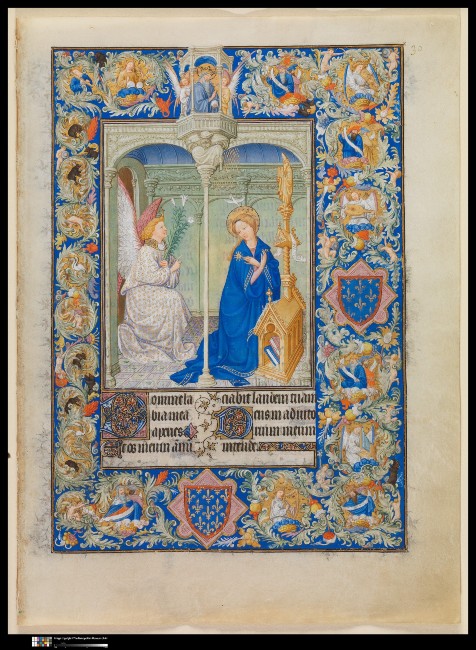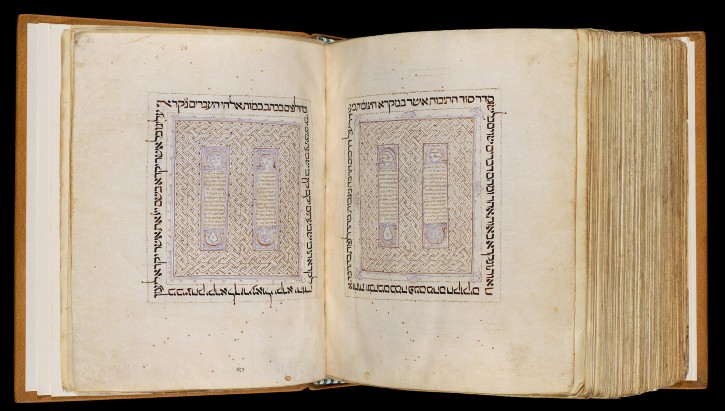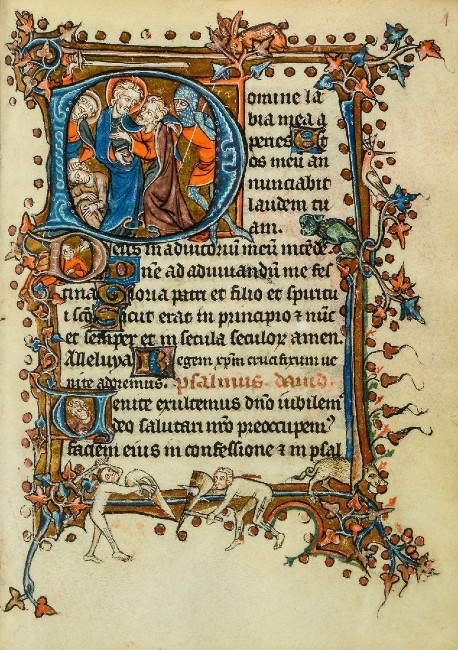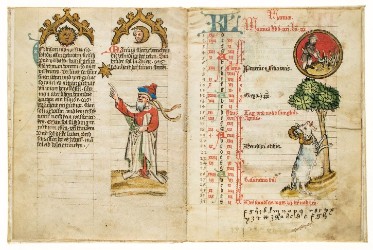
NEW YORK – Illuminated manuscripts are collected for their beauty as well as their historical significance. Long before printed books rolled off the presses by the thousands, these lavishly decorated books were made by hand, a true labor of love taking weeks, even months to complete.
The level of detail in figural illustrations, some tiny, is staggering and it’s not just pictures but often words themselves that are decorated. Text not only runs left to right in neat rows but around pages and corners, and highlight letters can be illuminated to give them added power or reflectiveness when gold leaf or silver leaf is added.
C. Griffith Mann, Ph.D., the Michel David-Weill Curator in Charge, Department of Medieval Art and the Cloisters, at the Metropolitan Museum of Art, explains that for a long time, illuminated manuscripts were the only form of preserving knowledge. The word manuscript derives from the Latin word for hand, manus, and script for writing. Illuminated comes from the Latin word, lumare, meaning to brighten or illuminate. “We define any manuscript as a handwritten book and there are those manuscripts that also have illuminations in them, i.e. pictures or the letters can be decorated,” said Mann.

While most illuminated manuscripts were written in Latin and are Christian-based, there is a long and rich tradition of illuminated Hebrew examples and many other languages as well as secular books. Among religious-themed illuminated manuscripts, a Book of Hours, a Christian devotional book, is fairly common. While each book is handmade and unique, similar biblical verses and readings were used in most of them.
“By the 13th Century, you actually begin to see some significant changes with the rise of manuscripts in the vernacular [and different languages] … so that’s a sign that there was a rising literacy rate,” Mann said. “It coincides with the arrival of universities and the need to have more and more different kinds of text. One of the reasons we know so much about the ancient world in terms of texts is because of the tradition of preserving the texts and copying them, initially in places like monasteries. That’s how the writings of people like Aristotle have come down to us because they were preserved in written form and copied over in different books and manuscripts.”

Like most private collectors buying for their personal libraries, the Met museum has specific attributes it looks for when acquiring illuminated manuscripts. “Because manuscripts are not always art objects, we are really looking for illuminated manuscripts that stand out not only as products of human knowledge and repositories of information but as objects that convey the beauty and the power of the visual arts,” Mann said. “For us, rarity is certainly one quality that we are looking for, although we have some texts of books that are common,” he said, citing a book of hours. “What makes certain books of hours stand out is the quality of their figural decoration. “One of the most famous books of hours at the Cloisters is the Belles Heures, literally Beautiful Hours, and that was illuminated by three brothers, the Limbourg brothers, in the early part of the 15th century.” The brothers’ patron was Jean de France, Duke of Berry, a prince of the royal French house of Valois—“an aristocratic patron who spared no expense,” Mann said. This particular example is sumptuously decorated with luminous picture groupings of Christian figures and landscapes that held meaning for the duke.
“One of the things that makes it famous is it is just packed with full-page or half-page illuminations that are all very painstakingly produced, sometimes using brushes that might be a small as just a few miniver hairs, enough to hold the ink or the paint but small enough to dazzle the mind with the level of minute details they are able to achieve,” Mann said.

While most medieval illuminators were unknown, the Limbourg brothers: Herman, Paul and Jean, were standouts in their field. Their work evinces the courtly technique that dominated European centers circa 1400, combining “elegant, sinuous figures, decorative color and selective realism in pictorial details such as animals, insects or plants,” according to the museum.
Book specialist Bloomsbury Auctions frequently offers illuminated manuscripts, including a lavishly illuminated miniature Book of Hours written in Latin, used in Rome with 210 leaves, circa 1480, that it offered in July 2019 and it features the work of another identified illustrator. “The illumination of this tiny jewel-like book has been attributed to Girolamo da Cremona, one of the most outstanding north Italian illuminators of the second half of the 15th century,” according to the auction catalog. A characteristic motif da Cremona favored was to incorporate border medallions populated by deer and monkeys amid rocky landscapes.

Many medieval illuminated manuscripts were written on animal skin, which is also called parchment. “One book might require 200 animals just to make a single book so the devotion of resources to this kind of activity was pretty substantial,” Mann said.
“At the Cloisters our books are online with lots of illustrations and the reason that we are committed to collecting and showing these objects is because they really represent one of the major art forms of the Middle Ages,” he said. “Obviously, people still make handmade decorated books but they basically disappear with the advent of the printing press and the ability to produce books in much greater numbers. What we show at the Cloisters in some cases is really kind of the last flourishing of this tremendous effort and energy that was devoted to the arts at the end of the Middle Ages.”
# # #



